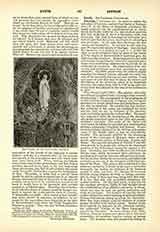

Louis of Granada, theologian, writer, and preacher; b. of very humble parentage at Granada, Spain, 1505; d. at Lisbon, December 31, 1588. At the age of nineteen he was received into the Dominican Order in the convent of Santa Cruz, Granada. With a mentality of the highest quality and the gift of unremitting application he united a profoundly spiritual character which promised a brilliant and fruitful career in the service of the Church. His philosophical studies finished, he was chosen by his superiors to represent his convent at the College of St. Gregory at Valladolid, an institution of the Dominican Order reserved for students possessed of more than ordinary ability. Here he acquitted himself with rare distinction, not only in the regular ecclesiastical courses, but in the humanities, to which he gave special attention at the request of his superiors. His studies completed, he at once entered upon the career of a preacher, in which he continued with extraordinary success during forty years. The fame of his preaching spread beyond the boundaries of his native land, and at the request of the Cardinal Infante, Dom Henrique of Portugal, son of King Manuel, he was transferred to the latter country, where he became provincial of the Portuguese Dominicans in 1557. His extraordinary sanctity, learning, and wisdom soon attracted the attention of the queen regent who appointed him her confessor and counsellor. The Bishopric of Viseu and the Archbishopric of Braga were successively offered to him only to be courteously, but firmly, refused. The honors of the cardinalate, offered to him by Pope Sixtus V, were also declined.
Among the hundreds of eminent ascetical writers of Spain, Louis of Granada remains unsurpassed in the beauty and purity of his style, the solidity of his doctrine, and the popularity and influence of his writings. Besides ascetical theology, his published works treat of Scripture, dogma, ethics, biography, and history. He is best known, however, for his ascetical writings. The appreciation of their worth extended throughout Europe, and later to America, and their popularity still remains but little impaired after the passage of four hundred years. Nearly all of these works were translated into the various European languages and several into Turkish and Japanese. The best known of his ascetical writings, and the one that achieved the greatest measure of success, is “The Sinner’s Guide” (La Guia de Pecadores). This work was published at Badajoz in 1555. It is marked by a smooth, harmonious style of purest Spanish idiom which has merited for it the reputation of a classic, and by an unctuous eloquence that has made it a perennial source of religious inspiration. It has been most favorably compared with A Kempis’s “Imitation of Christ“. Within a comparatively short time after its first appearance it was translated into Italian, Latin French, German, Polish, and Greek. A new and revised English translation was published at New York in 1889. His “Memorial of the Christian Life” (Memorial de la vida christiana) is almost equally well known. In 1576 he published at Lisbon a Latin work on the principles of pulpit oratory (Rhetoricae Ecclesiasticae, sive de ratione concionandi). It enjoyed an extensive vogue, not only in Spain, but in most of the countries of Euro; new editions appeared successively at Venice 1578), Cologne (1578, 1582, 1611), Milan (1585), and Paris (1635). A Spanish translation was published at Madrid in 1585. To illustrate the principles embodied in this work, a volume of the author’s sermons, marked by great purity of style and deep religious feeling, was published seven years after his death. In all, some twenty-seven works are attributed to his pen. A Latin edition of all his writings was published by Andrew Schott and Michael of Isselt at Cologne in 1628-29. A complete edition of his ascetical works was brought out at Madrid, in 1679, by Dionysius Sanchez Moreno, O.P., and a complete edition of his sermons, in French, at Paris, in 1868.
J. B. O’CONNOR

